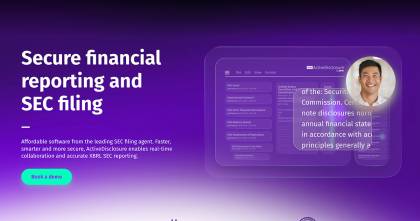When funds register securities, they have to specify how many shares they plan to create. But what if they don’t have a specific number to sell? What if they want to keep the fund open-ended, so investors can purchase new shares over time? After the initial registration statement, open-ended funds need a way to acknowledge and pay fees for shares they sell in subsequent years. They can achieve this goal by filing SEC Form 24f-2.
What Is SEC Form 24f-2?
An open-end fund has the ability to issue redeemable shares on an as-needed basis for investors to purchase. The SEC proposed Rule 24f-2 to provide a way for them to account for the sale of shares without having to create a new registration for every security before they make a sale. The form is a post-effective filing that investment companies – including mutual funds, face-amount certificate companies, unit investment trusts, and certain closed-end funds – must file within a specific period. The form allows these funds to report and pay registration fees that are applicable under Rule 24f-2.
Understanding Rule 24f-2
Rule 24f-2 provides certain allowances and sets requirements for open-ended funds. Specifically, the final rule requires that an affected fund files Form 24f-2 within 90 days after the end of a fiscal year in which it sells securities subject to registration fees under the Securities Exchange Act. In exchange, these funds have more freedom to release unlimited shares. Instead of having to register shares in advance of purchase, they can log these purchases and then submit a notice filing to the SEC about the sale of those shares.
The form calculates the fees based on the securities sold, and the fund pays the fees upon filing. Filing the form makes it easier for certain funds to release new shares without the burden of filing a new registration each time. As such, it is a popular option for mutual funds and other open-ended investment products.
Who Files SEC Form 24f-2?
Generally, SEC Rule 24f-2 applies to open-ended investment companies, like mutual funds or ETFs. Face-amount certificate companies and UITs may also need to file the form when they sell new shares. Closed-end funds generally do not file Form 24F-2. However, certain closed-end funds that make periodic repurchase offers — such as interval funds or, in some cases, a non-traded business development company engaged in continuous offerings — may be required to file.
Funds must calculate the registration fees for shares sold above existing registered securities and pay them along with the filing. The deadline for submission is 90 days after the end of the fiscal year in which the fund sold the shares. If the organization fails to make the filing and pay fees by the deadline, the SEC may charge interest on the unpaid fees.
SEC Form 24f-2 Reporting Requirements
Funds managers must provide certain information on Form 24f-2 as part of the filing. Specifically, they should include:
- Information about the fund, including its name, EDGAR identifier, and type of securities
- Number of securities previously registered
- Net sales of securities in the past fiscal year, which subtracts redemptions from gross sales
- Fee calculation according to the SEC’s fee rate for the year
- Signature of the officer completing the filing
SEC Form 24f-2 Filing Process
Once funds are ready to submit the form, they can use the EDGAR filing system to submit paperwork and fees electronically. Typically, the person handling the filing is the fund’s counsel, compliance officers, or service providers. The filing may require supporting documentation, like sales data or prior registration history. In the calculation of the fees, accuracy is paramount. For one, insufficient payment may be subject to penalties. Also, fees paid are generally nonrefundable. (In cases of overpayment, a fund may request a refund or apply the balance as a credit, subject to SEC approval.)
Amendments and Corrections
As with many SEC forms, funds can file amendments and corrections to Form 24f-2, but they should do so with care. Amendments can help correct the record or update information to make it current. Funds that overpaid fees can request a refund of the overpayment, but they may not receive it. Underpayments of fees may require an additional payment of interest for the unpaid portion, as well as the remaining fees. To avoid discrepancies and minimize the likelihood of needing to file an amendment, funds should keep detailed records for sales and redemptions.
Support for 24f-2 Filings
When researching the official SEC form 24f-2 and its requirements under Rule 24f-2, many funds discover that they need expert assistance with the filing. Software solutions from DFIN simplify and streamline SEC filings for investment companies, with advantages such as inline XBRL. Our software integrates seamlessly with fund tracking tools, a vital component of fund operations and ongoing offerings. Our tools ensure compliance with the Investment Company Act, the Securities Act, and SEC registration requirements, as part of providing transparency and fee accountability for investors and regulators. With our professional support and filing tools, you can minimize errors and improve your efficiency. To learn more about our compliance solutions, request a demo today.

